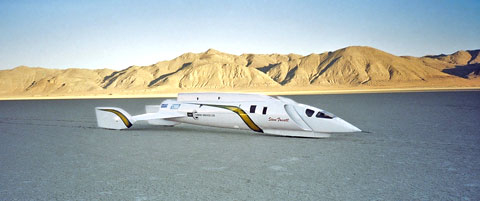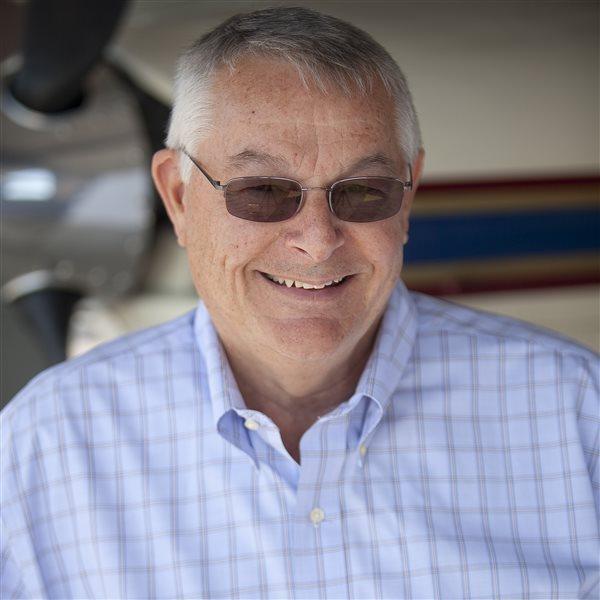
Engineering data indicates Steve Fossett’s jet car could have gone between 850 and 900 mph had there not been a steering incident during a run by the car’s original owner. The Fossett team had modified and improved the car at the time Fossett died in an aircraft accident. The old record stands at 763 mph, faster than the speed of sound.
All you need to do is find $3 million, then take it to the desert and have the courage to turn the key. The car is developed from land speed legend Craig Breedlove’s promising 1996-1997 Spirit of America/Sonic Arrow by the late Fossett’s Reno, Nev., team during 2006 and 2007. Fossett purchased the unfulfilled project in July 2006 from Breedlove with an initial record target speed of 800 mph, with eventual development planned for speeds in excess of 900 mph. The Target 800 mph team was nearing the testing phase at Bonneville, Utah, or the dry lakes of California when Fossett was killed in the crash of his light aircraft in September 2007. It is believed he was scouting for a site at the time of his death.
Initial record runs were planned for a dry lake in northern Nevada in spring 2008. A logistical exercise for loading, transport, and assembly was conducted by the team on the Black Rock Desert in October 2007. Further engine tests were conducted in early 2008 at El Mirage before the project was eventually shut down, with all elements carefully packed and mothballed in mid-2008.
The car has been rebuilt and re-wired from the ground up with a longer wheelbase, wider track, and modified aerodynamics, including lengthened wheel covers and parachute assembly, and no dorsal fin. The braking parachute and its deployment system were also redesigned.
Powered by a single modified General Electric J-79 turbojet once used in the USAF Phantom II fighter-bomber and F-104 Starfighter, the engine generates more than 18,400 pounds of supersonic thrust with afterburner and water injection. The car is constructed of steel tubing with stressed aluminum skin, the driver compartment being made of a carbon/Kevlar/glass fiber composite.
Although at first glance a tricycle layout, the car actually runs on four wheels, the front pair closely situated to allow a smaller frontal area, thus reducing drag, the rear pair on a wide track for stability. Primary deceleration is, naturally, by parachute, with a friction ski brake for final stopping power.
“Having worked for Steve Fossett on this program 2006-2007 (and all other of his adventure projects 1993—2007), we are pleased to be engaged to sell the car (by Mrs. Fossett) on behalf of the Fossett Foundation. We are asking for offers in the region of $3 million and so far have had a number of serious enquiries from the ad (and other PR and word of mouth) but no sale has yet been confirmed,” said Stuart Radnofsky, director of Project 100 Communications Limited of Hertfordshire, England.



